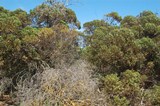Weaver research trip, Tswalu Kalahari Game Reserve
14-17 November 2011
Tswalu Kalahari Game Reserve, in the Northern Cape, South Africa, is one of the De Beers Diamond Route properties. "Tswalu" means "a new beginning".Robert Thomson, University of Turku, Finland, invited me to visit for a few days. I was able to assist with, and observe, several weaver research projects at Tswalu. Some of the weaver colonies have been uploaded to PHOWN (Photos of Weaver Nests), and links are provided below to the colony records.
Pygmy Falcons and Sociable Weavers
Robert is investigating the interactions between Sociable Weavers and the world's smallest bird of prey, the Pygmy Falcon.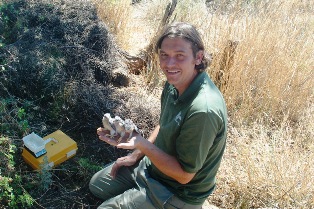 Robert with 3 falcon chicks (VM 1551) |
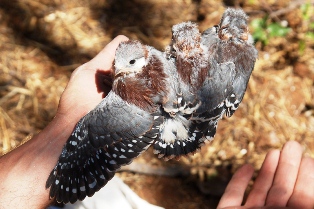 Close-up of the same chicks |
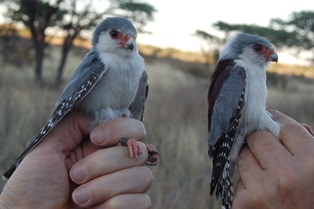 Adult pair (VM 1552) |
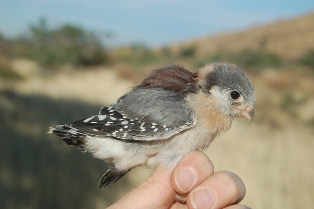 Large chick (VM 1556) |
Sociable Weavers
Rowan Martin and Susie Cunningham, Percy FitzPatrick Institute of African Ornithology, among other studies, are looking at weight changes of Sociable Weavers related to temperature. A group of helpers was up before dawn on two mornings (of my stay) to catch, ring and measure weavers at different colonies.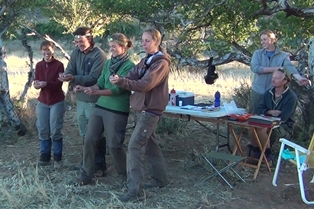 |
Releasing Sociable Weavers in small groups at a time after ringing, allowed them to fly off together, at colony 96. Left to right: Susie, Robert, Jenny, Robin, Karin, Rowan. |
Most Sociable Weaver nests were in Camel thorn acacias Acacia erioloba (VM 1550) or Shepherds trees Boscia albitrunca, while two colonies were on telephone poles.
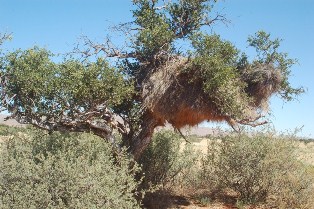 Shepherds tree colony (VM 1554) |
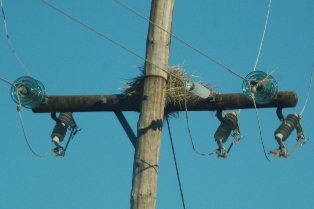 Telephone pole colony (VM 1553) |
Sociable Weavers do not need to drink water if it is not available, but they do drink when water is nearby. Adults at colony 25 regularly flew the 500 m or so to a reservoir to drink.
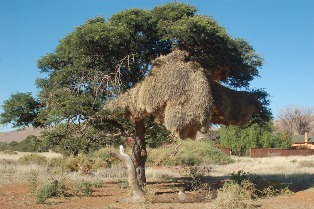 Colony (VM 1550) |
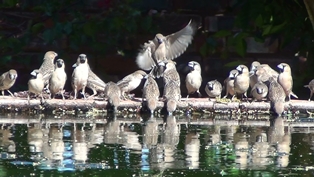 Drinking (VM 1550) |
Adult Sociable Weavers return to their colony quickly after disturbance. They feed on seeds and insects. The photos below were taken at at colony 76.
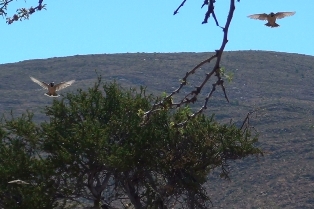 Adults returning to colony |
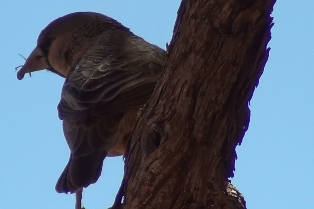 Adult with invertebrate prey |
Sociable Weaver nests are important ecologically in providing shelter and shade for a large diversity of birds and other fauna. Records noted at Tswalu include:
- Pygmy Falcons breed in their nests - see above
- Paper wasps often build their nests under the weaver nests
- Mud wasps build their nests inside abandoned Sociable Weaver nest chambers
- Birds roosting in Sociable Weaver nest chambers at Tswalu are Acacia Pied Barbet, Ashy Tit and Red-headed Finch (R Thomson).
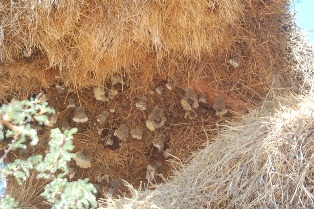 Paper wasps, (VM 1550) |
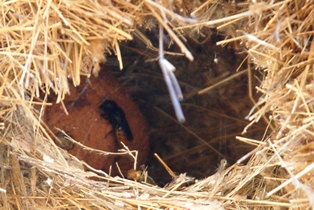 Mud wasp (1551) |
White-browed Sparrow Weavers
Andy Young at the University of Exeter, UK, has been running a research project on cooperative breeding in White-browed Sparrow Weavers since 2005. This nest contained a chick and an addled egg (see VM 1547).Read more about Andy's project here.
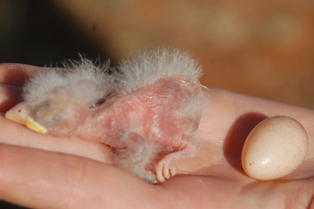 Nestling and egg |
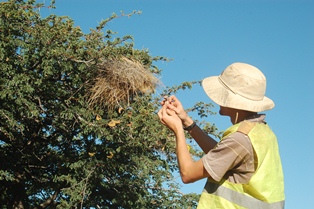 Dom returning the chick |
Southern Masked Weavers
At Tswalu a few Southern Masked Weavers were seen in adult male breeding plumage but no active nests were seen (eg, see VM 1538). One male was building a new, green nest although the other nests in the colony were old (see VM 1540). A Diederick Cuckoo was heard daily in picnic valley, probably a male advertising his territory in preparation for the masked weaver breeding season to start.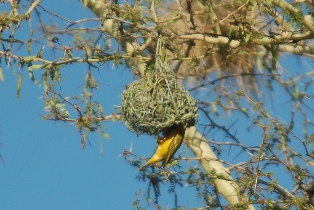 Male building |
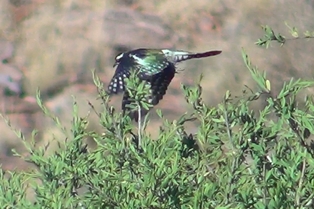 Diederick Cuckoo flying from singing perch |
Scaly-feathered Finches
Scaly-feathered Finches are usually relatively common at Tswalu, but were only noted a few times during my stay. Two nesting trees were found, with non-breeding nests (see VM 1542 and VM 1543).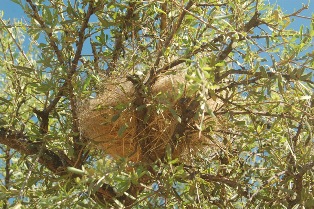 Nest |
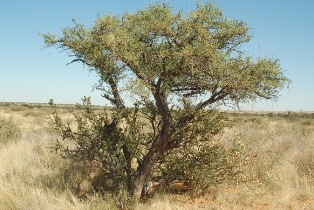 Nesting tree |
To see all weaver colonies In PHOWN, from Tswalu, see here.
Acknowledgements
Thanks to the Tswalu Kalahari Game Reserve for sponsoring my trip.Thanks to Robert for inviting and hosting me at Tswalu.
Thanks to all the researchers for their insights.
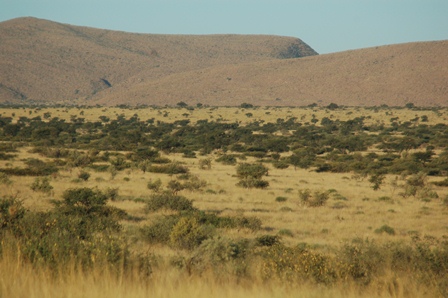
Also see Africa - Birds and Birding facebook page here.
Some other projects at Tswalu:
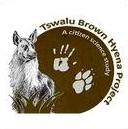 Tswalu Brown Hyena Project
Tswalu Brown Hyena Project








